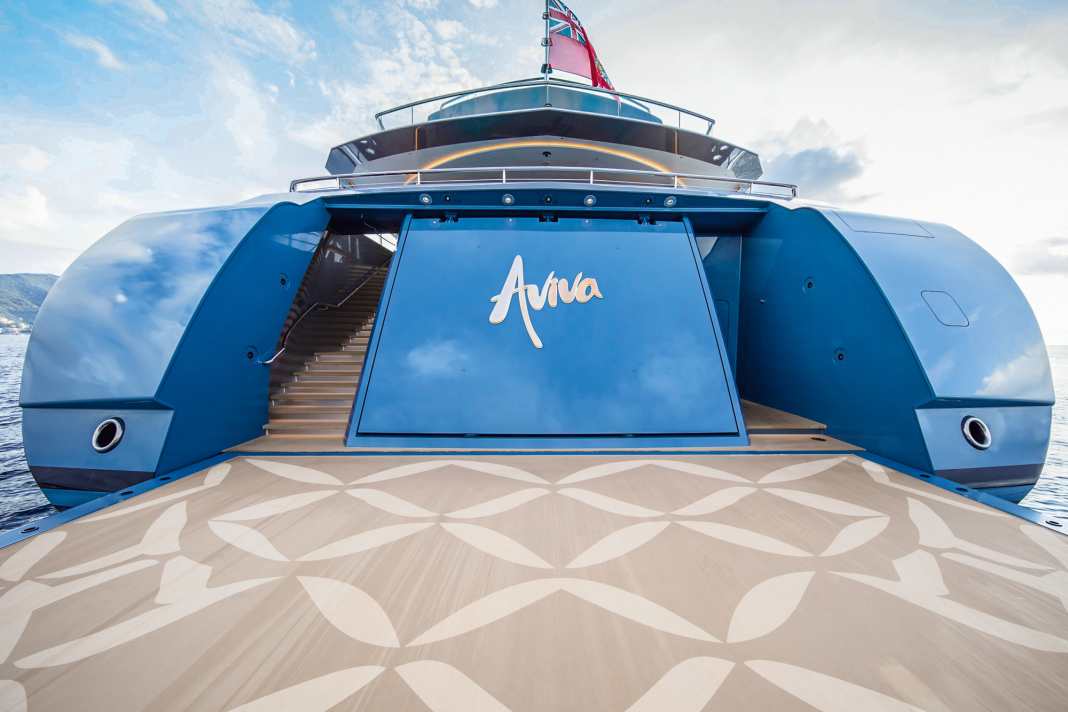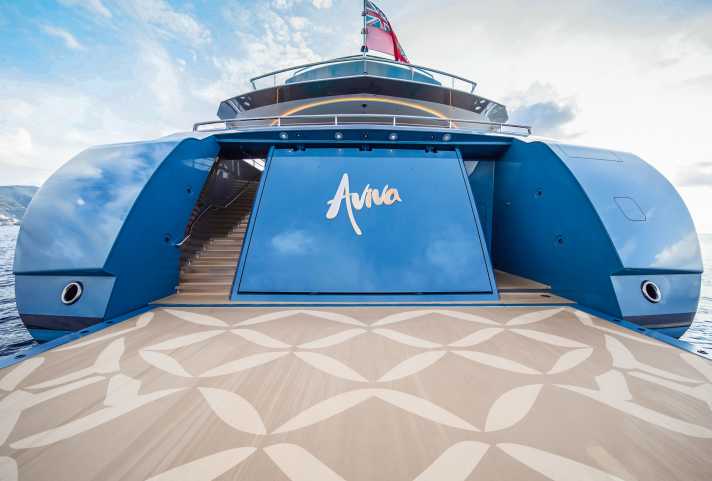Illegal wood sources: "blood teak" in yacht building - and the alternatives






In this article:
Dedicated owners have hundreds of decisions to make when designing a yacht. In the past, one of them was not really a decision, but rather a matter of course. If the deck was to be made of wood, it had to be naturally grown teak from Myanmar. Full stop. Because it is simply the best. In the south-east Asian country, which lies between India, China and Thailand, the coveted tropical wood is theoretically still available. Primary forest covers more than a third of the area of the country formerly known as Burma, which is around twice the size of Germany. However, as the trees, which are up to 40 metres tall and 100 years old, have been ruthlessly cut down and not reforested, Myanmar's teak carpet has holes in it. In 2013, the EU adopted the Timber Trade Regulation (EUTR) to combat illegal logging and trade. In a second step, sanctions were introduced as a result of the coup d'état on 1 February 2021 by the Myanmar military against the state-owned company MTE (Myanmar Timber Enterprise), which holds the exclusive rights for timber production and export. No timber from illegal logging was allowed to enter the EU domestic market.
The aim was to use economic pressure to persuade the regime to respect human rights and to adopt sustainable forestry practices. In addition, the teak business is an extremely lucrative source of income and foreign currency for the current rulers; a cartel of corrupt government officials in Myanmar, international timber traders and sawmill operators left no stone unturned to circumvent the EU restrictions. The term "bloodwood" became established in the mass media, also in connection with the "Gorch Fock" - in reference to diamonds of dubious African origin.
Investigation uncovers illegal trade in teak
To this day, not everyone complies with the ban on importing teak from Myanmar. A research team, which also included journalists from NDR, WDR, Süddeutsche Zeitung and Spiegel, was able to identify at least three companies that illegally import the coveted wood. In 2022 alone, around 3,000 tonnes are said to have entered the EU, often via middlemen in Croatia, Italy or Poland, according to a statement from NDR.
Three companies from Germany are therefore at the centre of the investigation: "Alfred Neumann GmbH" from Seevetal, "Koch Furniere" from Dortmund and "WOB Timber" from Hamburg. More than 1,300 tonnes of teak worth around seven million euros are said to have been illegally imported in recent years. Neumann and WOB denied the allegations, while Koch did not respond to enquiries from the research team.
However, one of Europe's largest timber traders, the JAF Group headquartered in Austria, admits to importing 17.5 tonnes of teak from questionable sources in 2022. According to the NDR report, a spokeswoman said that the teak had apparently been felled after the sanctions were imposed. Internal control mechanisms intended to prevent such imports had failed. Attempts are being made to clarify the matter. Several public prosecutors' offices are investigating the cases.
Why teak is so popular in yacht building
Until recently, untreated teak from Myanmar was considered the undisputed gold standard, which also applies to its colour appearance. The particularly weather-resistant, knotless wood is non-slip and does not work when installed. It is easy to bend during processing and does not splinter. The weather resistance of teak from Burmese natural forests has long been one of the main arguments in favour of its use in boat building, especially for high-quality Scandinavian-style sailing yachts.
In addition, organic growth also produces particularly long logs - this is particularly important on mega and gigayachts, as longer planks require fewer joints during installation and result in a more homogeneous overall appearance. Due to the long growth, the annual rings are also very close together, resulting in fine, usually strictly parallel fibres. This results in a calm grain, probably the greatest visual asset. When laid on decks, the straight-grained wood visually elongates them and thus the entire hull.
The yacht industry is turning away from "blood teak"
There is hardly any other shipyard where the teak deck is as much a part of the DNA as at Hallberg-Rassy. Accordingly, the Swedes used to be cautious when it came to replacing wood. But since mid-2022, they have been focussing on the polyurethane material from Ecodeck. Shipyards such as Saffier and Sirius moved away from wood years ago. The fact that almost all well-known shipyards - from luxury brands such as Nautor's Swan to the Beneteau Group - are turning away from teak from natural forests was also revealed in a survey conducted by BOOTE sister company BOOTE EXCLUSIV during boot Düsseldorf. When asked about the "teak strategy", there was usually a clear answer: legal teak, sustainably produced.
At Nautor Swan, for example, certified teak from various parts of the world is already being tested. "A teak alternative should not be judged by how it looks when new, but over time," says Michelangelo Casadei, Technical and Operational Director of the Nautor Swan Group, emphasising the relevance of classic teak. "We helped our timber partner to maximise stock levels of legal Burma teak. Our full order book made long-term planning easy, and yet the stocks are only sufficient for the entire 2023 production."
Plantation teak as an obvious replacement
Sunseeker also continues to offer teak alongside synthetic decks, but this is sustainable and FSC-certified. It was laid on the Manhattan 68 shown in Düsseldorf, among others. The sticks are shorter than usual and do not have such a tight and straight grain as natural forest teak, but the colour tone of the alternative comes very close to the ultimate.
The decks of the Pearl 72 were also planked with "plantation teak". The British manufacture their yachts in China and source their wood from Asia. This variant of tropical wood grows in a controlled manner for ten to 15 years and has to be trimmed regularly so that no knots appear in the trunk. Some yachts are therefore adorned with an extremely realistic imitation: moulded teak. For the variant called Fineline, veneers from FSC forests are glued together to form a plank shape. This results in strictly parallel fibres on the surface, which closely resemble the narrow annual rings of Burma teak.
There are many alternatives
In addition to legal teak from certified plantations, there are various other alternatives for deck design. And not only in the normal boat classes, but also in the superyacht sector, where a teak deck was previously almost a matter of course. Nautor offers cork as an option for the ClubSwans, even in the interior of the new ClubSwan 43. The basic properties of cork are almost ideal as a deck covering, and it is also easy to keep clean and can be laid individually.
Other options for deck coverings include other types of wood, modified wood or plastic replicas. We have summarised the different products, their properties and how you can install plastic decks yourself in the article in our sister magazine YACHT Alternatives to the teak deck explained.
The soft SeaDek, which resembles the surface of a SUP board, can be found on the 13 metre long motor yacht Swan Shadow, for example. At boot, Beneteau took a special approach and presented an attractive deck made of Fineline Iroko on the First 44. Contest, on the other hand, fitted the new model with an Esthec deck, which the daysailers from Saffier Yachts have been relying on for several years.
Azimut also relies on Esthec, even for superyachts. The shipyard giant from the Turin area often chose the polyurethane (PU)-based material for the helipads of various large formats, but also for complete exterior decks, such as on the almost 100 metre-long A&R building "Aviva". There, Esthec panels form various patterns that adapt to the respective floor design of the interior. The art-collecting owner is quoted as saying: "We're not on the 'Titanic' here." On board for months, he could not bear the black Sika stripes between the classic teak deck.

Sunseeker presented an astonishingly wide range of alternatives. In the case of the 75 Sport Yacht, this only becomes clear on a second glance at the bathing platform. So-called Wolzynteek was installed on the 23-metre glider. Wolz Nautic uses Sikafloor Marine-595 for this, which is used to create coloured polyurethane panels that are provided with joints and filled with a sealant that provides grip, just like the original. The wood look is only achieved with the final sanding.
New deck materials are being trialled
Another alternative, also involving Wolz, is Tesumo. The Lürssen shipyard and the University of Göttingen developed the material as part of a research project and it is marketed in a joint venture with Wolz Nautic. It is produced on the basis of natural, fast-growing wood from controlled sustainable forestry, which is refined in a three-stage modification process. Michael Wolz is confident: "Test surfaces on smaller yachts have been on the water for more than six years and work flawlessly."
Tesumo, Europe's largest supplier of prefabricated decks, uses a cork base for large yachts that is 3D-milled and dispenses with the usual filler levelling. "This saves weight, has a sound-insulating effect and is a further contribution to sustainability in deck construction," says the Managing Director of Wolz Nautic. The first Arksen 85 sets sail in spring with 125 square metres of Tesumo on board, which corresponds to a cumulative plank length of 2.6 kilometres.

